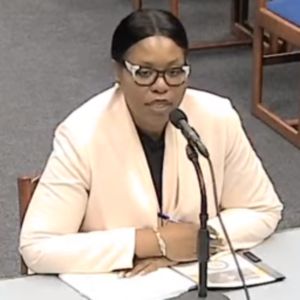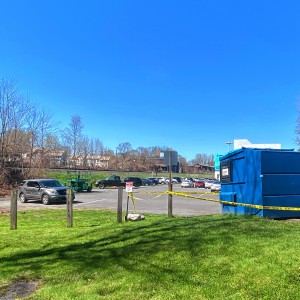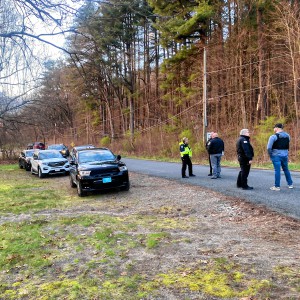Columnist Johanna Neumann: Environmental progress in 2023

Johanna Neumann FILE PHOTO
| Published: 12-20-2023 6:36 PM |
Thinking globally and acting locally has long been a saying in the environmental movement. In the spirit of being grateful for every bit of incremental progress we make to protect our water, our air and our open spaces, here, in order from hyperlocal to international, are a few bright moments for our planet from 2023.
Making it easier to walk, bike and roll. This fall the Amherst School District participated in Walk, Bike and Roll to School Day. Four town schools participated with roughly 300 parents and kids biking or walking to school on Oct. 4 to raise awareness about the benefits of using our bodies to get around. State funding for biking and walking infrastructure is competitive and generally goes to communities visibly calling for it. My hope is that widespread community support for walking, biking and rolling to school will help unlock state funding to transform the intersections near Fort River Elementary School. Meanwhile, it’s exciting to see the Main Street redesign in Northampton get approved.
Standing up for our local river. In 2023, Fort River Watershed Association volunteers continued to raise awareness, conduct research and build support for restoring and protecting the river. The Fort is the longest undammed tributary of the Connecticut River, and it’s home to migratory fish and an endangered mussel. The annual Fort River Cleanup gave people a way to connect with the health of their local river and meet like-minded people. It will take time to reduce pollution in the river and building public support is step one.
The Jones Library Building Project moving forward. As Amherst’s largest civic infrastructure initiative in 30 years, the Jones Library Building Project melds state and local government support with private philanthropy. This week’s town council vote cements this project’s future. Once construction is complete, the renovated and expanded library will be more energy efficient than the current building and eliminate fossil fuel combustion on-site. This building will serve as a model for climate-friendly libraries nationwide. Onwards!
On the state level, I’m grateful for:
Renewable energy growth in Massachusetts. To prevent the worst impacts of global warming,we need to move away from polluting energy sources as quickly as possible. While final numbers aren’t out yet, renewable energy continued to rise in Massachusetts this year. In 2022, Massachusetts generated 10 times as much solar power as it did in 2013. That growth continued this year, despite inflation. In 2024, renewables should see a big boost when the nation’s first utility-scale offshore wind farm, Vineyard Wind 1, is expected to come online, generating electricity to power more than 400,000 homes. And locally in Amherst, solar panels on what was formerly the Hickory Ridge Golf Course will hopefully start to harness renewable energy as well.
Getting off gas. Regulators in Massachusetts are planning for a future without fossil fuels, such as methane gas. A recent Massachusetts Department of Public Utilities ruling affirmed that electrification will be the commonwealth’s dominant strategy to reduce buildings’ contribution to climate change. As recently as 2021, the direct burning of fossil fuels accounts for more than half of all energy used in homes and at least 34% of all energy used in commercial buildings. Directives like these coupled with incentives for efficient electric appliances should make a big difference in helping us pivot towards a future powered by renewable energy.
Nationally, highlights include our president acting to protect more nature. This year, President Joe Biden has taken big steps toward fulfilling his stated goal of “conserving at least 30 percent of our lands and waters by 2030.” Since October 2022, the administration has designated four new national monuments — most recently, the 900,000-acre Baaj Nwaavjo I’tah Kukveni—Ancestral Footprints of the Grand Canyon National Monument in northern Arizona, as well as sites in Colorado, Texas and Nevada. The Biden administration has also taken action to protect the Boundary Waters in Minnesota and Chaco Canyon in New Mexico. There’s still hope that the administration protects more than 10 million acres in the remote Western Arctic Reserve.
Article continues after...
Yesterday's Most Read Articles
 Homeless camp in Northampton ordered to disperse
Homeless camp in Northampton ordered to disperse
 The Iron Horse rides again: The storied Northampton club will reopen at last, May 15
The Iron Horse rides again: The storied Northampton club will reopen at last, May 15
 Final pick for Amherst regional superintendent, from Virgin Islands, aims to ‘lead with love’
Final pick for Amherst regional superintendent, from Virgin Islands, aims to ‘lead with love’
 Authorities ID victim in Greenfield slaying
Authorities ID victim in Greenfield slaying
 Reyes takes helm of UMass flagship amid pro-Palestinian protests
Reyes takes helm of UMass flagship amid pro-Palestinian protests
 Police report details grisly crime scene in Greenfield
Police report details grisly crime scene in Greenfield
Internationally, nearly 150 countries agreed to phase out fluorescent lighting completely by the end of 2027 at the Minamata Convention and at COP28, nearly 200 countries including the United States agreed to and take actions to triple renewable energy capacity and double energy efficiency improvements globally by 2030.
As we look toward the new year, which is likely to be politically tumultuous in many ways, the progress we’ve made brings me hope for a greener healthier future for everyone. Happy holidays.
Johanna Neumann of Amherst has spent the past two decades working to protect our air, water and open spaces, defend consumers in the marketplace and advance a more sustainable economy and democratic society. She can be reached at columnists@gazettenet.com.

 Charlene Galenski: Blake Gilmore, a strong candidate for Deerfield’s Selectboard
Charlene Galenski: Blake Gilmore, a strong candidate for Deerfield’s Selectboard Annette Pfannebecker: Vote yes for Shores Ness and for Deerfield
Annette Pfannebecker: Vote yes for Shores Ness and for Deerfield Columnist Susan Wozniak: Rising costs long ago swamped hippie ideal
Columnist Susan Wozniak: Rising costs long ago swamped hippie ideal Guest columnist Rudy Perkins: Dangerous resolution pins ‘aggression’ on Iran
Guest columnist Rudy Perkins: Dangerous resolution pins ‘aggression’ on Iran
